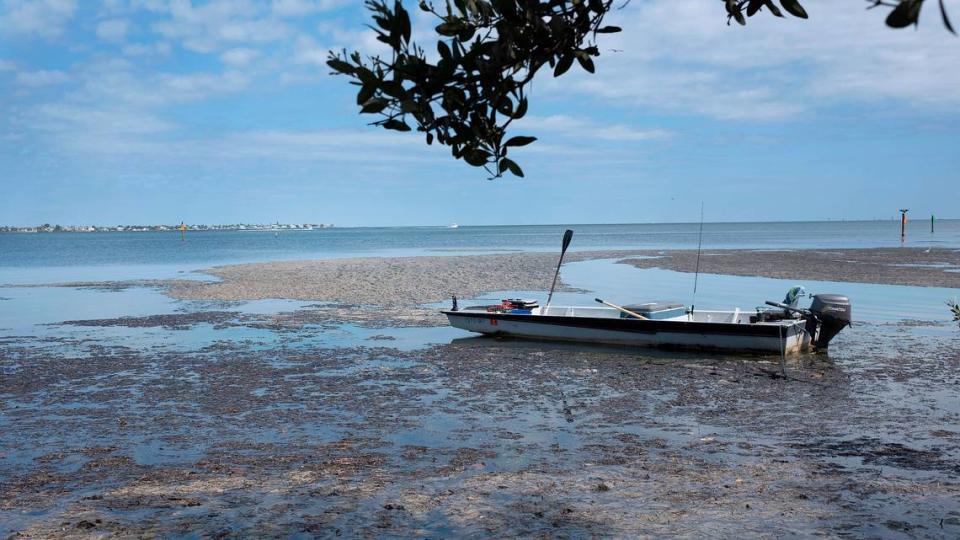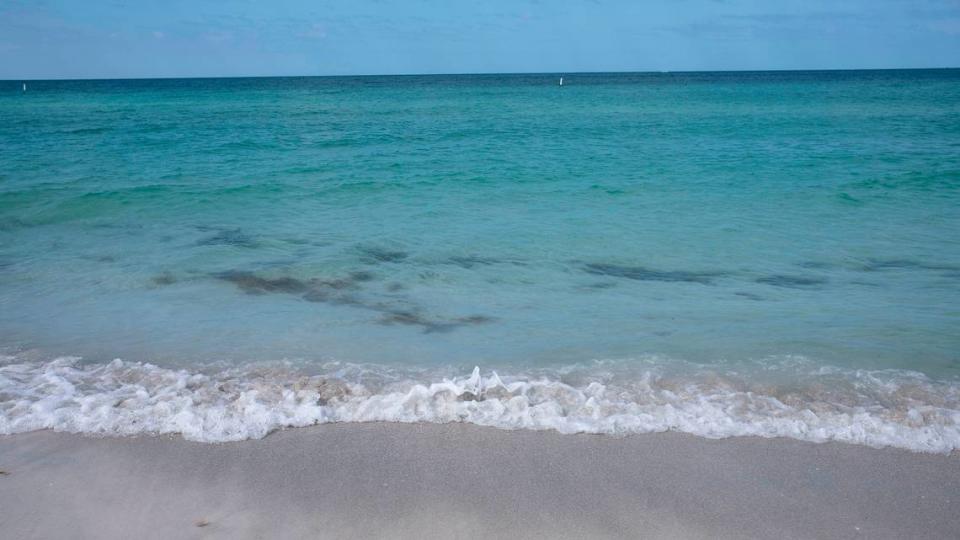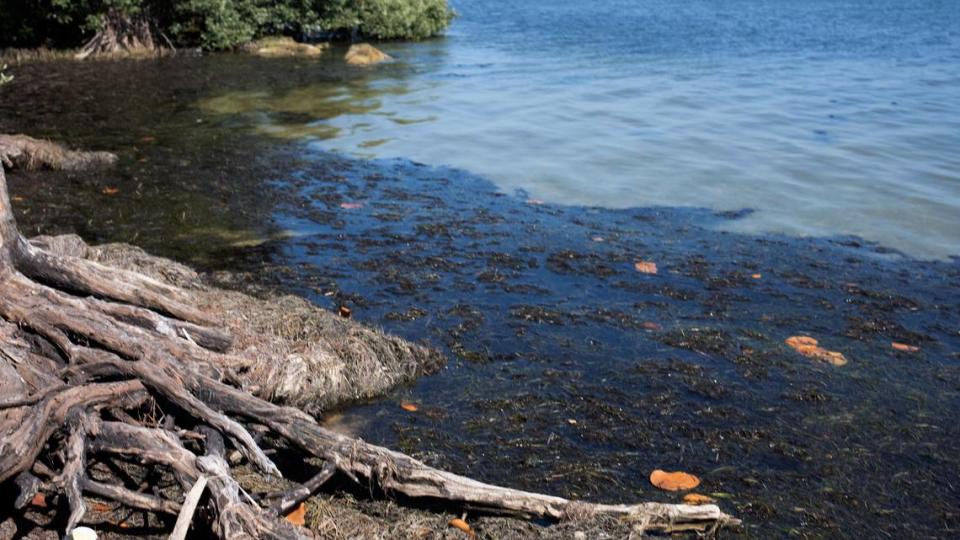What’s that smell on Florida beaches? Safe to swim? It looks like sewage — but it’s not
If you’ve spent time near the coast and beaches around Anna Maria Island and Bradenton lately, you may have noticed thick, dark mats of icky-looking stuff floating in the water.
What is it? And why does it smell so bad?
Commonly known as Lyngbya, and also sometimes called “gumbo,” “snot grass,” “fireweed” or “mermaid’s hair,” it is a kind of blue-green algae that has detached from the sea bottom and is now decomposing at the surface, where it turns brown.
In 2018, it got a new scientific name — Dapis pleousa — when researchers decided it belongs in its own special genus.
Between its odor and appearance, people sometimes mistake it for sewage, Sarasota Bay Estuary Program Executive Director David Tomasko said.
Lyngbya-type algae are naturally occurring in Florida waters. However, just like red tide, Lyngbya is sometimes considered a harmful algal bloom because it can cause problems for wildlife, ecosystems and people when too much of it piles up.
It can also be a nuisance, releasing foul odors and creating an unsightly mess.
“We will always have Lyngbya,” Tomasko said. “The question is, are we making it worse? We probably are.”
Smelly algae impacts beaches, parks
This week, the Bradenton Herald spotted large brown mats of algae around Palma Sola Bay and Anna Maria Sound. Some smaller drifts were present off of Manatee Public Beach.
Mote Marine Laboratory’s Beach Conditions tracker reported brown macroalgae at the north end of Anna Maria Island several times over the past week.
On Longboat Key’s Whitney Beach, Suncoast Waterkeeper shared footage of a large drift of macroalgae washing ashore.
Manatee County spokesperson Bill Logan said beach crews that maintain the shoreline along Coquina, Bayfront and Manatee Beaches have not noticed an uptick in algae.
But the county’s Natural Resources Department said that the algae is becoming a recurring problem for the area around the mouth of the Manatee River, including Perico Bayou.
“We are seeing an increase in early algae growth of Lyngbya on the bottom around the lower Manatee River at the mouth of Tampa Bay keyed into excess nutrients and warming water temperatures,” a statement provided to the Herald said.
County staff said it has become necessary to place floating booms on a seasonal basis to keep the “floating invasion” of Lyngbya out of Robinson Preserve.
Staff said that floating mats of Lyngbya can also get caught “in longshore currents that wrap back around to the shoreline of Anna Maria Island.”

Is water pollution to blame for algae blooms?
While Lyngbya is naturally occurring, water pollution can potentially boost its presence to unnatural levels.
Nutrients from stormwater runoff, lawn fertilizers, grass clippings, leaky septic tanks and municipal sewage spills can help fuel harmful algal blooms like Lyngbya and red tide.
In 2021, estuary program scientists documented a super-bloom of Lyngbya after the Piney Point industrial spill sent millions of gallons of contaminated water into Tampa Bay.
This year’s crop of Lyngbya is nowhere near those amounts, Tomasko said. He also noted that water quality and clarity has generally improved in the Sarasota Bay area over the last four years.
But excess nutrients from human sources could still be a factor in Lyngbya’s presence. He suspects that heavy winter rainfall during the El Niño weather pattern pulsed extra nutrients into local waters.
Two other major elements that Lyngbya needs to thrive — warming water temperatures and enough water clarity for sunlight to reach the seafloor — have also been present, Tomasko said.
Is it OK to swim around Lyngbya?
It’s not a good idea to make direct contact with the macroalgae.
Tomasko said that while it doesn’t carry the same threat as red tide, which releases a neurotoxin, Lyngbya-type algae can cause skin and respiratory irritation.
It can also be fatal to animals like dogs and horses if consumed.

What can be done about the algae?
Tomasko said one approach that local governments can take is removing the decaying algae from the water. In addition to removing the mess, it also removes nutrients from the water that could fuel algae growth.
Tomasko said that residents with waterfront homes can scoop it out of the water and compost it, but they should be extremely careful not to let pets near.
While the algae is unpleasant, Tomasko said there may be an upside.
“It makes people remember that water quality is important,” he said. “We’ve made some big improvements in recent years, but we’re not back to a completely healthy system yet.”
And while too much algae can be a bad thing, Tomasko said it’s important to remember that many types of algae play important roles in the ecosystem.
“Some of the tumbleweed macroalgae, like Sargassum, is really good habitat for things like shrimp,” Tomasko said.


